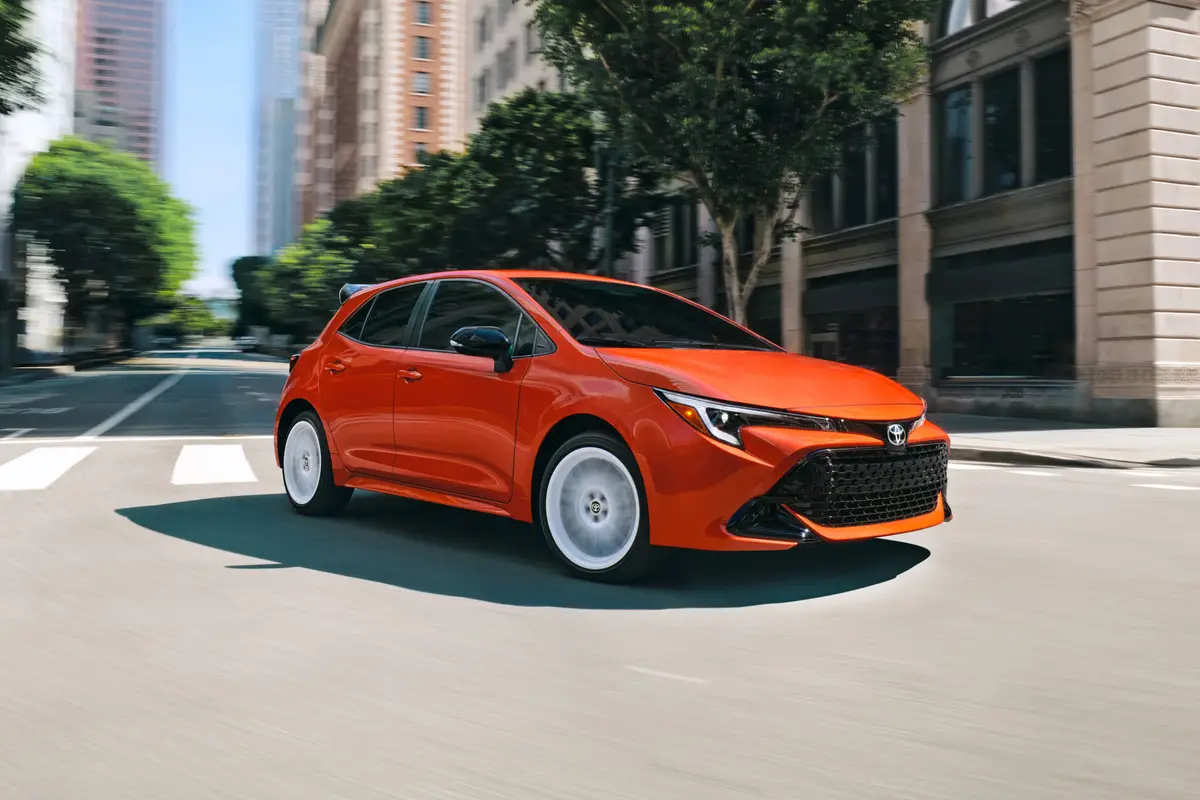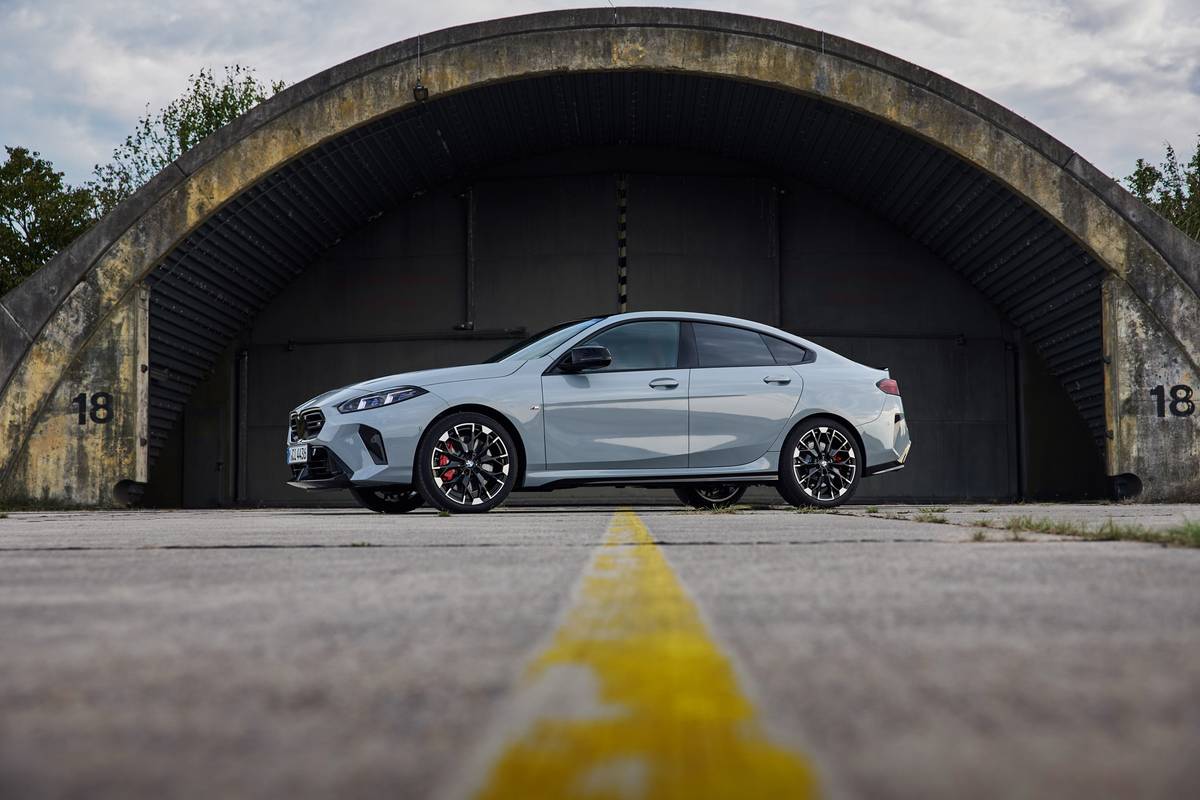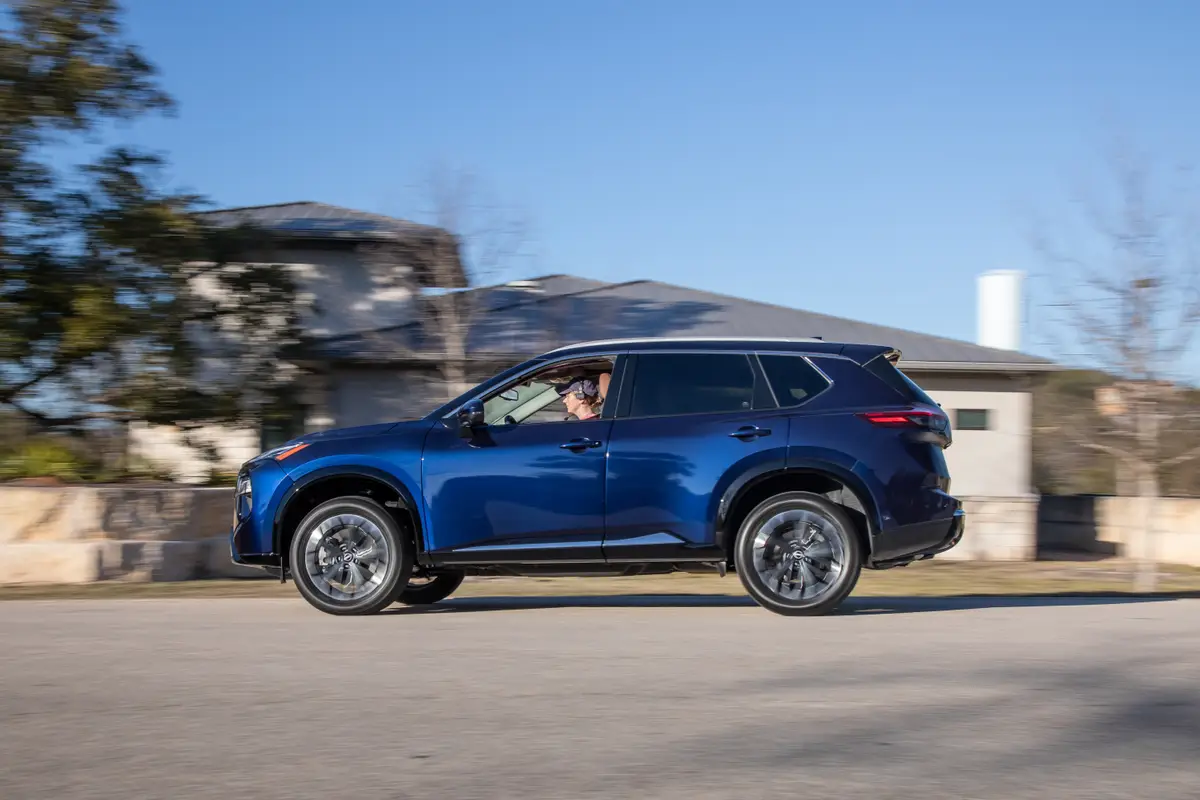Cincinnati.com's view
As faithful readers know, I’m an exponent of having at least four doors on most cars, roadsters the obvious exception. Accordingly, I was surprised at how much I preferred the new Mercedes-Benz C-Class coupe to the sedan version I tested some weeks back. (Though I must point out that it’s sort of a three-door – a hatchback.)
For one thing, it did NOT leave me with back spasms, as its quattroport sibling did, despite its snazzy low-slung aspect. Reason: the “B” pillar, the roof support that sits behind the driver’s seat, is placed much farther back on the coupe (Mercedes realizing full well that the rear seats here are essentially just a metaphorical dodge to keep insurance rates down). The only drawback is that the seatbelt anchor is a bit awkward to reach, but it’s a good trade-off. The C230 Sports Coupe is the least expensive Mercedes-Benz product available in the U.S., the company’s first venture into what it calls the low luxury segment. At its base price of $24,950, it is a sensational bargain, although it wouldn’t be hard to run it past the $30K mark with a quick trip through the options list. Warning: take a sample of this candy and you’ll likely be hooked for life on the M-B product line – they can’t be making any money on this car.
In stock trim, the C230 SC features a 2.3-liter supercharged inline four-cylinder engine; a close-ratio six-speed manual transmission; 16-inch alloy wheels; dual-zone automatic climate control; leather wrapped, multifunction steering wheel and shift knob; cruise control; AM-FM-WB-cassette radio; tilt/telescope steering wheel; power windows; twilight sensor headlamps; integrated garage door opener; trip computer; auto-dimming inside and outside rearview mirrors; front and side air bags; head curtain air bags; electronic stability program; brake assist; anti-slip regulation; four-wheel disc brakes with antilock, and the iconic three-pointed star buried in the grille.
The coupe shares NO body panels with the sedan – the only visible parts they have in common are the outside rearview mirrors, which, by the way, have turn signal repeaters built in.
The coupe is more than seven inches shorter than the four-door, with a bobbed tail and pronounced front overhang. It projects a very wedgy appearance with its raised rear and ground-hugging front. For all the chopping, I still found the driver’s position quite agreeable for my XXL frame.
Visibility is somewhat limited because of the shape, but not discomfortingly so. The integrated rear spoiler impedes rearward vision somewhat, but the area beneath it is transparent, which helps a bit.
EPA rates the SC a compact, with a cabin volume of just under 85 cubic feet. Cargo area is a modest 10 cubic feet, but with the rear seats folded (hey, why not make them removable?), that grows to 38 c.f.
The machine I was lent had the optional five-speed automatic transmission. Fine unit, but I personally would prefer the six-speed manual with this setu p, especially since they’ve made it a “stir me hard” close-ratio box.
As is the fashion in sporty cars these days, Mercedes lets you take control of gear changes through the console-mounted shifter. When it’s in Drive, you can grab a lower gear by merely yanking the lever to the left, or upshift by pushing it to the right, without having to move it first to a separate notch.
Hold it to the right for a second or so, and it returns to fully-automatic mode. Naturally, one of the many microprocessors that are watching everything like Argus will not allow you to downshift if that would cause over-revving. In full-auto mode, the trans seemed reasonably intuitive, holding an intermediate gear on upgrades and downshifting on downgrades. It is of the “adaptive” sort, which purports to conform itself to individual driving styles. It DID seem to learn that I prefer to shift on the far side of 5,000 rpm.
The 2.3-liter engine is aluminum over cast iron, with four valves per cylinder. ull name of this machine includes the cognomen Kompressor, which is emblazoned on the rear deck. That’s indicative of a belt-driven Roots-type supercharger plus intercooler which allows it to make 192 hp (@5,500). Torque maxes at 200 foot-pounds at a conservative 2,500 rpm and stays at that figure on out to 4,800. As a result, the engine feels brawny throughout its range and keeps its verve right on up to the 6,200 redline. The engine sounds rather ratty at idle and isn’t exactly euphonious as it spins up, either. But with 0-60 times in the 7.5-second range, it can be forgiven.
EPA mileage estimates are 21 city, 28 highway with the automatic. As with any heavy breather, be it turbocharged or supercharged, those figures deteriorate if you get into it a lot. My log shows 21.7 mpg, which was achieved mostly on country roads with very spirited driving. Premium fuel is advised.
Handling was of a high order. The electronic stability control didn’t seem quite so obtrusive as on the sedan, but I still preferred to turn it off for hard cornering work. It, plus the traction control, were much appreciated on wet pavement, however.
Noise level inside the coupe was moderate except when it was really working hard, and ride quality was very good – firm without being obnoxious. Interestingly enough, the drag coefficient of the coupe – a commendably low 0.29, is eclipsed by the sedan’s 0.27, although the hatchback has a smaller frontal area.
As is typical of M-B products, its intimate relationship with the road argued for about a ton more weight than it actually has – curb weight is 3,340 pounds. In the U.S., the car is governed to 130 mph, which makes the brakes nicely overqualified.
Massive discs front and rear produce stops that seem to defy the laws of physics. I had a real-world test of the antilock system when a squirrel was too focused on his black walnut find to look both ways – my gear went flying off the passenger seat, but the fuzzy one made it home.
The included stereo, a little weak in FM reception, nonetheless was very clear and had good presence. I’d be tempted to pop for the Bose upgrade ($610) just based on prior experience with those rigs. The Bose gear is tailored to this specific interior, as on the more expensive M-B products.
As an interesting side note, the 230 SC has what Mercedes calls a Flexible Service System. An oil quality sensor sends information to a microprocessor, which also gathers data on driving patterns, to determine oil change interval. Mercedes says oil life can range from 10,000 to 20,000 miles, which is food for thought. That’s a rather persuasive argument for extended oil-change intervals, especially considering the extra demands of a supercharger.
Another bit of silicon wizardry – if a turn signal light fails, a visual warning is issued to the driver and the corresponding fog lamp takes over the signaling chore for the nonce. In the rear, conventional brake lamps are supplemented wit h a light-emitting-diode array to give a 50-millisecond faster warning to following motorists.
This car is made in Germany. Materials, fit and finish were exquisite. The test car had an optional “Orion blue” metallic paint job for $640; Timeport cell phone and CD changer, $1,795; a rain sensor for the windshield wipers plus panoramic power moonroof, $995; headlamp washers and heated front seats, $820. Total, with freight, was $31,145.
Payments on that car would be $631, assuming 20 percent down, 10 percent interest and 48 payments. The research firm Edmunds says these cars, being so new, are on average going out at the sticker price, although if you do load it with options you might be able to bargain for a modest price break.
“The Gannett News Service”
Latest news



